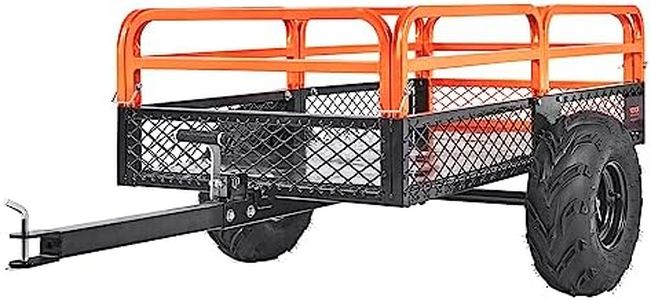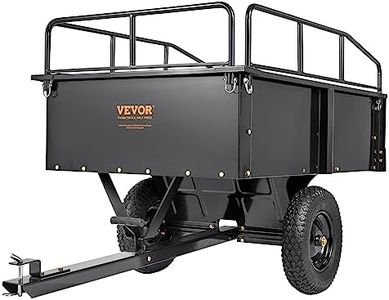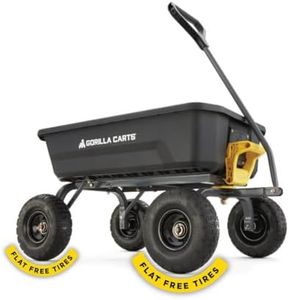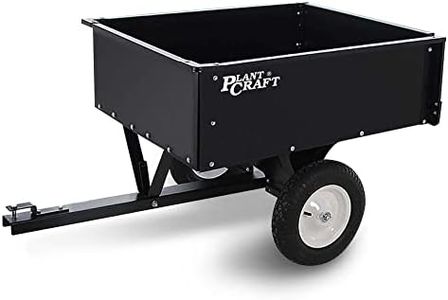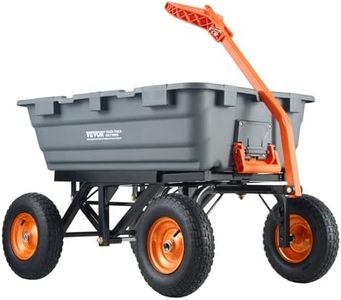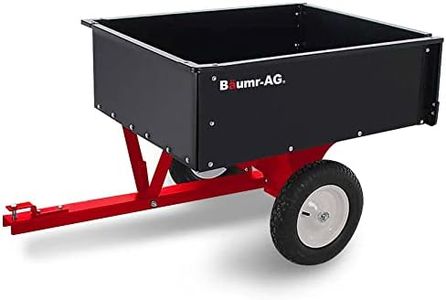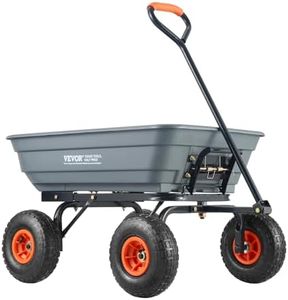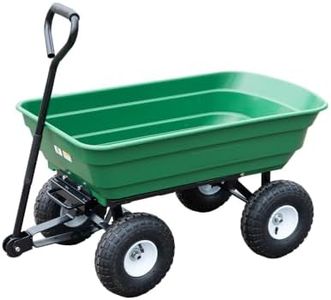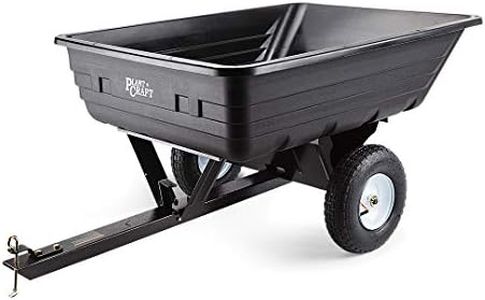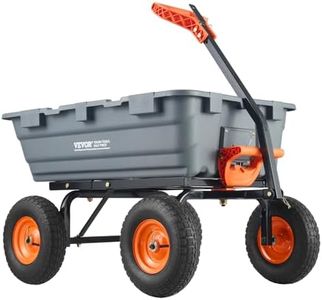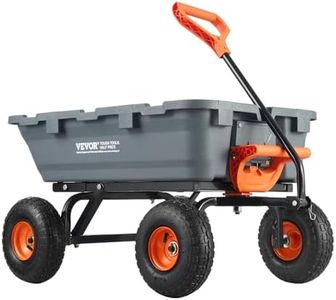We Use CookiesWe use cookies to enhance the security, performance,
functionality and for analytical and promotional activities. By continuing to browse this site you
are agreeing to our privacy policy
10 Best Dump Carts
From leading brands and best sellers available on the web.Buying Guide for the Best Dump Carts
Choosing the right dump cart can make your yard work, gardening, or farm tasks much easier. Dump carts are versatile tools meant for hauling heavy loads like soil, mulch, gravel, or debris, and they come in different styles and sizes. Understanding the main features will help you find one that matches your tasks and makes your workload lighter and more efficient.Load CapacityLoad capacity refers to the maximum weight the dump cart can safely carry, usually measured in pounds. This is important because it determines how much material you can move at once without straining the cart or risking damage. Load capacities are often divided into light-duty (up to 400 pounds), medium-duty (400-700 pounds), and heavy-duty (700+ pounds). Light-duty carts work well for garden waste and small jobs, while medium- and heavy-duty carts are needed for bigger loads like rocks or large amounts of soil. To choose the right capacity, consider the heaviest items you'll typically transport.
Bed Size/VolumeBed size or volume is the amount of space in the cart’s container, usually measured in cubic feet. This matters because it affects how much you can haul per trip, regardless of weight. Small beds (2-4 cubic feet) are good for tight spaces and light loads, medium (5-8 cubic feet) handle most lawn and garden needs, and large beds (9+ cubic feet) are ideal for big projects. Think about the materials you’ll carry most often, since bulkier materials may need more space even if they’re lightweight.
Construction MaterialDump carts are typically made from plastic, steel, or sometimes a combination. Plastic beds are lighter and resist rust, making them good for lighter yard work and wet conditions. Steel beds are much stronger and better suited for heavy or rough materials, but they can rust if not cared for. Your choice depends on your climate (wet or dry), what you'll carry, and how durable you need your cart to be.
Dumping MechanismThe dumping mechanism decides how easy it is to empty the cart. Some have a simple hinge that tips the bed, while others feature quick-release handles or push-button dumps. Easier dumping is important if you’ll be dumping heavy or sticky loads often. If you unload frequently or have trouble with lifting, consider a cart with a user-friendly dumping system.
Wheel Type and SizeWheel types affect how smoothly the cart moves over different terrain. Pneumatic (air-filled) tires provide cushioning and grip, making them ideal for rough or uneven ground. Solid tires don’t get punctures and require less maintenance, but can be rougher to push. Larger wheels roll easier over rough or soft surfaces, while smaller wheels work well on smooth ground or for lighter loads. Choose based on your yard or work area—bumpy ground favors bigger, pneumatic wheels.
Handle and Hitch TypeHandles are used for pulling the cart by hand, and some carts also come with a hitch to connect to a lawn tractor or ATV. Straight or padded handles are easier on your hands for manual pulling, while hitch types can save you time if you have a riding mower or other vehicle. Pick a cart that matches your working style: if you’ll often use a vehicle, make sure the hitch is compatible. For manual use, check handle comfort and pulling height.
ManeuverabilityManeuverability involves how easily you can turn and steer the cart. Some carts have pivoting front axles for tighter turning, while others have fixed wheels. If you have a yard with lots of corners, trees, or tight spots, a more maneuverable cart will save effort and time. Think about the layout of your space and how much turning you’ll need to do.
